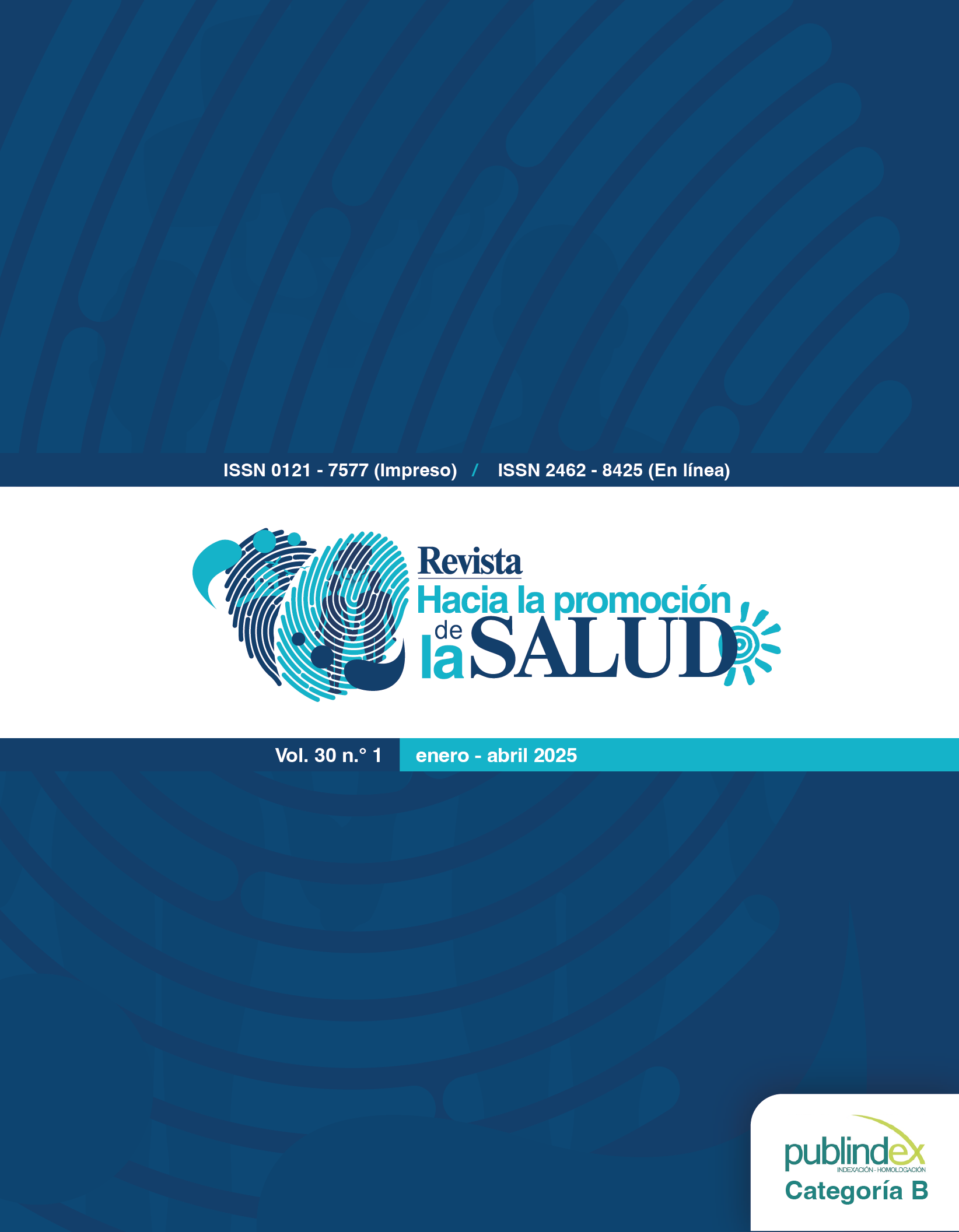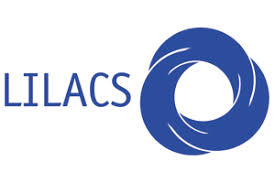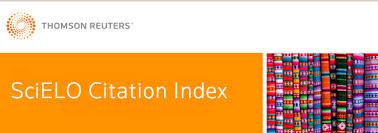Autores/as
Resumen
Objetivo: examinar la presencia de depresión, estrés percibido y los factores asociados en una muestra de estudiantes de medicina de la Universidad de Caldas - Colombia. Materiales y métodos: estudio transversal, cuantitativo, descriptivo, realizado con 211 estudiantes de Medicina de la Universidad de Caldas, en Manizales - Colombia en el año 2018. Los participantes respondieron tres instrumentos de autoinforme: cuestionario sobre variables demográficas y clínicas, el inventario de depresión de Beck y la escala de estrés percibido. Los análisis estadísticos fueron realizados utilizando la prueba de chi-cuadrado y un modelo de regresión logística binaria. Resultados: 63% de los participantes tuvo algún grado de depresión. El 17% presentó depresión grave.
Se encontraron como factores de riesgo con asociación estadísticamente significativa la percepción elevada de estrés OR: 18,7 (IC 95% 4,4 - 80), la percepción de un mal estado de salud OR: 6,7 (IC 95% 2,7 - 16,7), pasar tiempo solo OR: 4,2 (IC 95% 1,4 - 12,8), el sexo femenino OR: 4,2 (IC 95% 2,2 - 7,9) y los antecedentes familiares de suicidio o de intentos de suicidio OR: 3,5 (IC 95% 1,6 - 7,7). Conclusiones: se encontró una alta prevalencia de depresión en los estudiantes de medicina, asociado principalmente a los altos niveles de estrés percibido, por lo cual es necesario implementar medidas adicionales encaminadas al manejo de la depresión y del estrés. En futuras investigaciones se requiere conocer las estrategias de afrontamiento que tienen los estudiantes para manejar el estrés y las variaciones en el estado de ánimo.
Citas
2. GBD 2019 Mental Disorders Collaborators. Global, regional, and national burden of 12 mental disorders in 204 countries and territories, 1990–2019: a systematic analysis for the Global Burden of Disease Study 2019. Lancet Psychiatry [Internet]. 2022 Feb [cited 2023 Mar 4]; 9(2):137‑50. Available from: https://doi.org/10.1016/s2215-0366(21)00395-3
3. Institute for Health Metrics and Evaluation. Global Health Data Exchange (GHDx) [Internet]. Seattle, WA: IHME; [cited 2023 Mar 4]. Available from: https://vizhub.healthdata.org/gbd-results/
4. American Psychiatric Association. Diagnostic and statistical manual of mental disorders: DSM-5-TR. 5th ed, text rev. Arlington (VA): American Psychiatric Publishing; 2022.
5. Ministerio de Salud y Protección Social. Encuesta nacional de salud mental. Tomo I. Bogotá (Colombia): Ministerio de Salud y Protección Social; 2015.
6. Fernández CJ, GH. Prevalencia del trastorno depresivo y factores asociados a esta patología en los estudiantes de pregrado del programa de Medicina de la Universidad de Caldas, en el segundo semestre del año 2000. Manizales (Colombia): Universidad de Caldas, Facultad de Ciencias para la Salud, Departamento de Salud Mental y Comportamiento Humano; 2001.
7. Bonilla-Pabón J, Salazar-Espinosa JF, Molina-Correa Y, Vélez-Ríos DA, Ropero-Gutiérrez U. Prevalence of depression symptoms in medical students of the medical program from the University of Caldas, Manizales-Colombia Rev Méd Risaralda [Internet]. 2018 [cited 2020 Jun 28];24(1):20–23. Available from: https://doi.org/10.22517/25395203.9401
8. Alonso-Polo JD, Castaño-Castrillón JJ, Cerón-Rosero YE, Dávila-Menjura LM, De la Rosa AJ, De la Rosa-Marrugo PE, et al. Frequency of depression, according to Beck questionnaire, on medical students from Manizales city (Colombia), 2014: cross sectional study. Arch Med (Manizales) [Internet]. 2015 [cited 2020 Jun 28];15(1):9-24. Available from: https://revistasum.umanizales.edu.co/ojs/index.php/archivosmedicina/article/view/717/912
9. Iorga M, Dondas C, Zugun-Eloae C. Depressed as freshmen, stressed as seniors: the relationship between depression, perceived stress and academic results among medical students. Behav Sci (Basel) [Internet]. 2018 Aug 3[cited 2020 Jun 28];8(8):70.Available from: https://doi.org/10.3390/bs8080070
10. Guavita-Falla PM, Sanabria-Ferrand PA. Depressive symptoms prevalence, in one medical student population. Universidad Militar Nueva Granada School of Medicine, Bogotá-Colombia. Rev Fac Med (Bogotá) [Internet]. 2006 [cited 2020 Jun 29];54(2):76-87 Available from: https://www.redalyc.org/pdf/5763/576363925003.pdf
11. Bohórquez Peñaranda AP. Prevalencia de depresión y de ansiedad según las escalas de Zung, y evaluación de la asociación con el desempeño académico en los estudiantes de medicina de la Pontificia Universidad Javeriana [Master thesis]. Pontificia Universidad Javeriana; 2007.
12. Gaviria Méndez AE. La Universidad de Antioquia como institución promotora de la salud (Medellín, Colombia, 2010‑2013). Investigación En Enfermería: Imagen Y Desarrollo [internet] 2016 [cited 2020 Jun 29];18(1):13‑30. Available from: https://revistas.javeriana.edu.co/index.php/imagenydesarrollo/article/view/10687
13. Rotenstein LS, Ramos MA, Torre M, Segal JB, Peluso MJ, Guille C, et al. Prevalence of depression, depressive symptoms, and suicidal ideation among medical students: a systematic review and meta-analysis [Internet]. JAMA. 2016 Dec 6 [cited 2020 Jun 29];316(21):2214-36. Available from: http://jama.jamanetwork.com/article.aspx?doi=10.1001/jama.2016.17324
14. Cuttilan AN., Sayampanathan AA., Ho RC. Mental health issues amongst medical students in Asia: a systematic review (2000-2015). Ann Transl Med [Internet]. 2016 [cited 2020 Jun 29];4(4):72. Available from: http://www.ncbi.nlm.nih.gov/pubmed/27004219
15. Abdel Wahed WY, Hassan SK. Prevalence and associated factors of stress, anxiety and depression among medical Fayoum University students. Alexandria J Med [Internet]. 2017;53(1):77–84. [cited 2020 Jun 29] Available from: http://linkinghub.elsevier.com/retrieve/pii/S2090506816000063
16. Singh A, Lal A. Prevalence of depression among medical students of a private medical college in India. J Health Allied Sci.[internet] 2010 [cited 2020 Jun 29];9(4):1393-8. Available from: http://www.ojhas.org/issue36/2010-4-8.htm
17. Añasco Loor SY, Morán Espinel LK. Prevalencia y factores de riesgo de depresión en estudiantes de medicina de primero a octavo semestre de la Pontificia Universidad Católica del Ecuador en los meses de agosto y septiembre del 2017. Pontificia Univ Católica del Ecuador [undergraduate thesis] 2017 [cited 2020 Jun 29] Available from: https://repositorio.puce.edu.ec/handle/123456789/30490
18. Zeng W, Chen R, Wang X, Zhang Q, Deng W. Prevalence of mental health problems among medical students in China: a metaanalysis.
Medicine (Baltimore). [Internet] 2019 [cited 2020 Jun 29];98(18):e15337. Available from: https://doi.org/10.1097/
MD.0000000000015337
19. Seo C, Di Carlo C, Dong SX, Fournier K, Haykal KA. Risk factors for suicidal ideation and suicide attempt among medical students: a meta-analysis. PLoS One [Internet]. 2021 Dec 22 [cited 2022 Aug 29];16(12):e0261785. Available from: https://doi.org/10.1371/journal.pone.0261785
20. Wallace JE, Lemaire JB, Ghali WA. Physician wellness: a missing quality indicator. Lancet [Internet]. 2009 [cited 2022 Jun 29];374:1714-21. Available from: https://pubmed.ncbi.nlm.nih.gov/19914516/
21. Hodkinson A, Zhou A, Johnson J, Geraghty K, Riley R, Panagopoulou E, et al. Associations of physician burnout with career engagement and quality of patient care: systematic review and meta-analysis. BMJ [Internet]. 2022 Sep 14 [cited 2025 Aug 29];378:e070442. Available from: https://doi.org/10.1136/bmj-2022-070442
22. Bassols AM, Okabayashi LS, Abd S, Carneiro BB, Feijó F, Guimarães GC, et al. First- and last-year medical students: is there a difference in the prevalence and intensity of anxiety and depressive symptoms? Rev Bras Psiquiatr [Internet]. 2014 [cited 2020 Jun 29];36(3):233-40. Available from: https://www.scielo.br/scielo.php?script=sci_arttext&pid=S1516-44462014000300233
23. Thun-Hohenstein L, Höbinger-Ablasser C, Geyerhofer S, Lampert K, Schreuer M, Fritz C. Burnout in medical students. Neuropsychiatr [Internet]. 2021 Mar [cited 2025 Aug 29];35(1):17-27. Available from: https://doi.org/10.1007/s40211-020-00359-5
24. Wan DWJ, Goh LSH, Teo MYK, Loh CJL, Yak GHK, Lee JJH, et al. Enhancing self-care education amongst medical students:a systematic scoping review. BMC Med Educ [Internet]. 2024 Jan 8 [cited 2025 Aug 29];24(1):37. Available from: https://doi.org/10.1186/s12909-023-04965-z
25. Fink-Miller EL. Provocative work experiences predict the acquired capability for suicide in physicians. Psychiatry Res [Internet]. 2015 [cited 2020 Jun 29];229:143-7. Available from: https://aquila.usm.edu/cgi/viewcontent.cgi?article=2759&context=dissertations
26. Ortega RFF, Barros AC, Cantero OH. Depresión y factores sociodemográficos asociados en estudiantes universitarios de ciencias de la salud de una universidad pública (Colombia). Psicol Caribe [Internet]. 2011 [cited 2020 Jun 29];27:40-60. Available from: http://www.scielo.org.co/pdf/psdc/n27/n27a03.pdf
27. Di Vincenzo M, Arsenio E, Della Rocca B, Rosa A, Tretola L, Toricco R, et al. Is there a burnout epidemic among medical students? Results from a systematic review. Medicina (Kaunas) [Internet]. 2024 Mar 30 [cited 2025 Aug 29];60(4):575.Available from: https://doi.org/10.3390/medicina60040575
28. Bergmann C, Muth T, Loerbroks A. Medical students’ perceptions of stress due to academic studies and its interrelationships with other domains of life: a qualitative study. Med Educ Online [Internet]. 2019 Apr 22 [cited 2025 Aug 30];24(1):1603526.Available from: https://www.ncbi.nlm.nih.gov/pmc/articles/PMC6493308/
29. Fitzgibbon K, Murphy KD. Coping strategies of healthcare professional students for stress incurred during their studies: a literature review. J Ment Health [Internet]. 2023 Apr [cited 2025 Aug 30];32(2):492-503. Available from: https://doi.org/10.1080/09638237.2021.2022616
30. Hope V, Henderson M. Medical student depression, anxiety and distress outside North America: a systematic review. Med Educ [Internet]. 2014 [cited 2020 Jun 29];48(10):963-79. Available from: https://doi.org/10.1111/medu.12512
31. Kötter T, Fuchs S, Heise M, et al. What keeps medical students healthy and well? A systematic review of observational studies on protective factors for health and well-being during medical education. BMC Med Educ [Internet]. 2019 [cited 2020 Jun 29];19(1):94. Available from: https://bmcmededuc.biomedcentral.com/articles/10.1186/s12909-019-1532-z
32. Universidad de Caldas. Caracterización población estudiantes de la Universidad de Caldas [Internet]. 2024 [cited 2025 Apr 21];[aprox. 49 p.]. Available from: https://www.ucaldas.edu.co/portal/wp-content/uploads/2025/03/CARACTERIZACIONPOBLACION-ESTUDIANTES-de-Caldas-2024.pdf
33. Sanz J, Perdigón AL, Vázquez C. The spanish adaptation of Beck’s Depression Inventory-II (BDI-II): Psychometric properties in the general population. Clínica y Salud [Internet]. 2003 [cited 2021 Mar 9];14(3):249-280. Available from: http://www.redalyc.org/articulo.oa?id=180617972001
34. Sanz J. 50 años de los inventarios de depresión de Beck: consejos para la utilización de la adaptación española del BDI-II en la práctica. Papeles del Psicólogo [Internet]. 2013 [cited 2020 Jun 29];34(3):161-8. Available from: http://www.redalyc.org/pdf/778/77828443001.pdf
35. Remor E. Psychometric properties of a European Spanish version of the Perceived Stress Scale. Span J Psychol [Internet]. 2006 [cited 2020 Jun 29];9(1):86-93. Available from: https://doi.org/10.1017/S1138741600006004
36. Pedrero‑Pérez EJ, Ruiz‑Sánchez de León JM, Lozoya‑Delgado P, Rojo‑Mota G, Llanero‑Luque M, Puerta‑García C. La “Escala de Estrés Percibido”: estudio psicométrico sin restricciones en población no clínica y adictos a sustancias en tratamiento. Behav Psychol/Psicología Conductual [Internet]. 2015 [cited 2025 Aug 30];23(2):305‑24. Available from: https://www.imrpress.com/journal/BP/23/2/pii/20152302305
37. Díaz Corchuelo A, Cordón Pozo E, Rubio Herrera R. Percepción de estrés en personal universitario. Diversitas Perspect Psicol [Internet]. 2015 [cited 2020 Jun 29];11(2):207-15. Available from: http://dx.doi.org/10.15332/s1794-9998.2015.0002.03
38. IBM Corp. IBM SPSS Statistics for Windows, Version 20.0. Chicago (IL): SPSS Inc.; 2010.
39. Bardeen JR, Fergus TA, Orcutt HK. Examining the specific dimensions of distress tolerance that prospectively predict perceived stress. Cogn Behav Ther [Internet]. 2017 [cited 2020 Jun 29];46(3):211-23. Available from: https://doi.org/10.1080/16506073.2016.1233454
40. Miranda Bastidas CA, Gutiérrez Segura JC, Bernal Buitrago F, Escobar CA. Prevalencia de depresión en estudiantes de medicina de la Universidad del Valle. Rev Colomb Psiquiatr [Internet]. 2000 [cited 2020 Jun 29];29(3):251-60. Available from: https://www.redalyc.org/pdf/806/80629305.pdf
41. Bernales A, Camaño E, Leonis M, Mendez O, Diaz M, Ureña N. Prevalencia y factores de riesgo asociados a síntomas depresivos en estudiantes de medicina. Rev Méd Cient [Internet]. 2010 Aug 11 [cited 2020 Aug 30];21(2). Available from: https://www.revistamedicocientifica.org/index.php/rmc/article/view/217
42. Pereyra ER, Ocampo Mascaró J, Silva Salazar V, Vélez Segovia E, da Costa-Bullón AD, Toro Polo LM, et al. Prevalence and associated factors WITH depressive symptoms in Health Sciences students from a private university in Lima, Peru 2010. Rev Peru Med Exp Salud Publica [Internet]. 2010 [cited 2020 Jun 29];27(4):520-6. Available from: http://www.scielo.org.pe/scielo.php?script=sci_arttext&pid=S1726-46342010000400005&lng=es
43. Dahlin M, Joneborg N, Runeson B. Stress and depression among medical students: a cross-sectional study. Med Educ [Internet].2005 [cited 2020 Jun 29];39(6):594-604. Available from: https://doi.org/10.1111/j.1365-2929.2005.02176.x
44. Iqbal S, Gupta S, Venkatarao E. Stress, anxiety and depression among medical undergraduate students and their sociodemographic correlates. Indian J Med Res [Internet]. 2015 [cited 2020 Jun 29];141(3):354-7. Available from: https://www.ncbi.nlm.nih.gov/pmc/articles/PMC4442334/
45. Ferrel Ortega R, Celis Barros A, Hernández Cantero O. Depresión y factores sociodemográficos asociados en estudiantes universitarios de ciencias de la salud de una universidad pública (Colombia). Psicol Caribe [Internet]. 2011 [cited 2020 Jun 29];27:40-60. Available from: http://www.scielo.org.co/pdf/psdc/n27/n27a03.pdf
46. Coentre R, Faravelli C, Figueira ML. Evaluación de la depresión y el comportamiento suicida entre estudiantes de medicina en Portugal. Int J Med Educ [Internet]. 2016 [cited 2020 Jun 29];7:354-63. Available from: https://doi.org/10.5116/ijme.57f8.c468
47. Peplau LA, Perlman D. Loneliness: a sourcebook of current theory, research, and therapy [Internet]. New York: Wiley Interscience; 1982.
48. Mann F, Wang J, Pearce E, Ma R, Schlief M, Lloyd-Evans B, et al. Loneliness and the onset of new mental health problems
in the general population. Soc Psychiatry Psychiatr Epidemiol [Internet]. 2022 Nov [cited 2025 Aug 30];57(11):2161-78.
Available from: https://doi.org/10.1007/s00127-022-02261-7
49. Park C, Majeed A, Gill H, Tamura J, Ho RC, Mansur RB, et al. The effect of loneliness on distinct health outcomes: a comprehensive review and meta-analysis. Psychiatry Res [Internet]. 2020 Dec [cited 2025 Aug 30];294:113514. Available from: https://doi.org/10.1016/j.psychres.2020.113514
50. Petitte T, Mallow J, Barnes E, Petrone A, Barr T, Theeke L. A systematic review of loneliness and common chronic physical conditions in adults. Open Psychol J [Internet]. 2015 [cited 2020 Jun 29];8(Suppl 2):113-32. Available from: https://www.ncbi.nlm.nih.gov/pmc/articles/PMC4636039/
51. Wang J, Mann F, Lloyd-Evans B, Ma R, Johnson S. Associations between loneliness and perceived social support and outcomes of mental health problems: a systematic review. BMC Psychiatry [Internet]. 2018 [cited 2020 Jun 29];18(1):156. Available from: https://bmcpsychiatry.biomedcentral.com/articles/10.1186/s12888-018-1736-5
52. González Olaya HL, Delgado Rico HD, Escobar Sánchez M, Cárdenas Angelone ME. Association among stress, depression risk and academic performance in students from the first semesters in a Colombian medical school. FEM Revista de la Fundación Educación Médica [Internet]. 2014 [cited 2020 Jun 29];17(1):47-54. Available from: http://scielo.isciii.es/scielo.php?script=sci_arttext&pid=S2014-98322014000100008&lng=es
53. Dirección Territorial de Salud de Caldas. Informe anual comportamiento de los intentos de suicidio en el departamento de Caldas. Dirección Territorial de Salud de Caldas. 2023. Disponible en: https://saluddecaldas.gov.co/loader.php?lServicio=Tools2&lTipo=descargas&lFuncion=descargar&idFile=5648


 PDF (English)
PDF (English)
 FLIP
FLIP



























